The sombre and imposing bluestone buildings just over Bell Street in Coburg housed Victoria’s chief penal establishment – Pentridge Stockade – for nearly 150 years. Named for the township Pentridge surveyed by Henry Foot in 1840, the prison housed men, women and children for varying periods of time, until closing in 1997.
The first timber structures were built north of Bell street in 1850, to accommodate Melbourne Gaol’s overflowing population and to conveniently house the labour force building the hazardous and on occasions impassable, Sydney Road.

The dramatic population increase due to the gold rushes, and subsequent increase in crime rates and custodial sentencing put even more pressure on this ad hoc system. Already, in March 1851 there were laments that the Pentridge Stockade
….bids fair to turn out what we predicted it would — an utter failure — in consequence of the inefficiency of the guard placed over the double distilled ruffians who are forwarded to the establishment. Since our previous report of the escape of prisoners two more have made their exit, and unless immediate measures be taken to secure those still left, we may shortly expect to have the country overrun with bushrangers. (Melbourne daily news 29 March 1851)
In 1855 Inspector-General of Penal Establishments, John Price recommended construction works to accommodate 1400 prisoners – to be built by the inmates using the plentiful local basalt. 1 After the death of John Price, William Champ oversaw the building program – including the bluestone wall encircling the 130 acre prison complex to provide greater security for both the residents and the surrounding population.
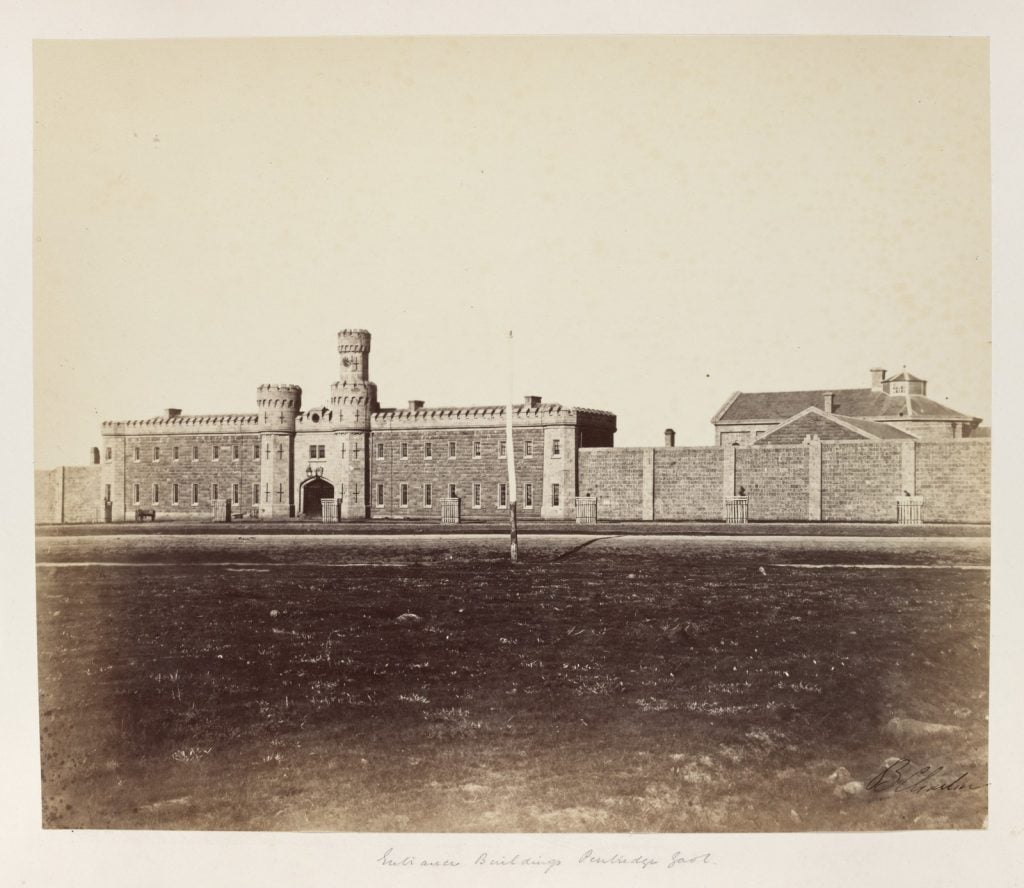

photographs by Jean-Baptiste Charlier 1822-1907, H36668
However, surrounding residents increasingly objected to their suburb and the prison sharing a name. A deputation visited the minister for roads in June of 1868,
to pray that the district of Pentridge might – be changed in same, and be henceforth known as Coburg. Their object was, as the deputation stated, to relieve the residents from some of the disagreeable associations connected with the immediate neighbourhood of the chief penal establishment in the colony. The deputation complained, with evident justice, that their property was injured in value, and the neighbourhood depreciated in character, because
of a prison and prisoners with whom they had nothing whatever to do. (The Australasian, 20 June 1868, p. 13)
The residents’ petitioning was recognised and in 1870, Pentridge was renamed Coburg, in honour of the visiting Duke of Saxe-Coburg.
Champ was instrumental in the use of prison labour in workshops and factories inside the prison walls. This reduced the cost of the prisons, by generating income and doing “in house” the work which otherwise would need to be paid for, and contributed to the reforming task of the prison.
I came across these proof sheets of images of Pentridge prison, taken by photographer Nicholas Caire, another gem in the Victorian Patent’s Office Copyright Collection. Registered in 1896, these images give us some sense of life inside the prison. From the early days, manufacturing and self-sufficiency were important components of the system. The site included a quarry, where hard labour sentences generated stone for the buildings and a range of workshops including bootmaker, a galvanising shed, tailors, woolen manufactory, and bookbinders.
Scenes at Pentridge Men’s Prison, 1896, H96.160/507; H96.160/509

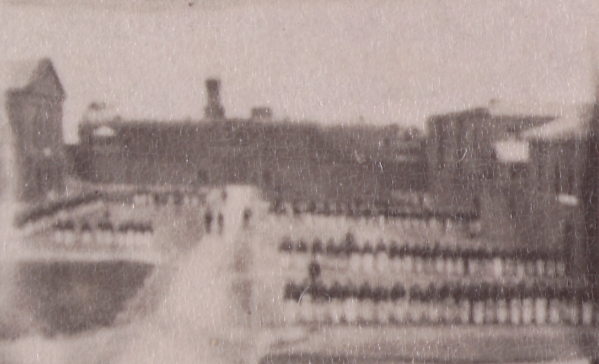
Prisoners assembled in work gang about to proceed to industry.
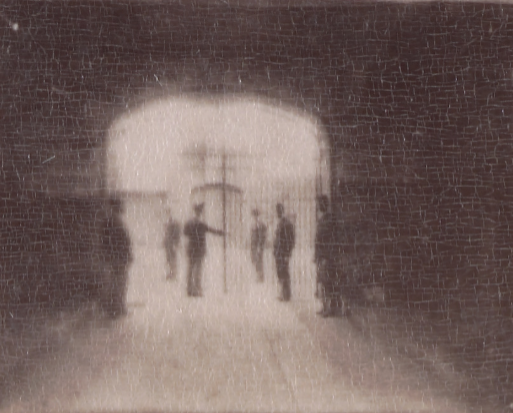

Middle tier (East), Main Wing, Female Prison.

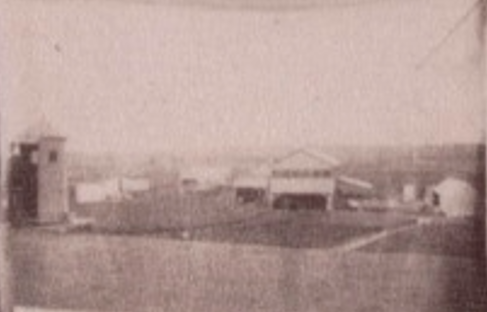
The Tannery and farm buildings.
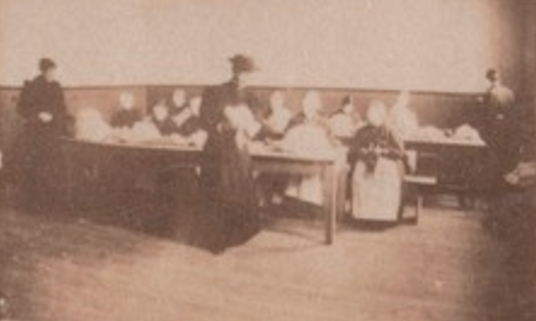

Clickers benches, Bootshop.
In contrast to the regimented and constrained life of the prison, Coburg Lake Reserve – a focal point of community life and celebration was to evolve, just over Gaffney Street. An early call for a public reserve was reported in the Herald, in 1912:
The urgent necessity for a reserve which can be availed of as a pleasure resort and picnic ground has long been recognised in the northern suburbs, and the Coburg Town Council has made an effort to provide such a reserve on the Merri Creek. A picturesque bend of the creek, immediately north of Pentridge Stockade, comprising about 22 acres of land and creek, has been secured for the purpose. (Herald, 9 November 1912, p.8)
Along with picnic grounds, swimming was to become a feature at the Lake and the Coburg Swimming Club had their inaugural meeting in November 1918 featuring races and a diving competition.
The lake, which is the Merri Creek, is a splendid sheet of water, with a straight course running east and west of more than 120 yards. It has a depth varying from 1ft to 20ft., and at the eastern end the water is banked up by a massive cement wall, from which the competing swimmers take their dive. (The Australasian, 28 December 1918, p. 17.)
Further additions to the swimming pool amenities opened in November 1929 – there is some fabulous footage from the National Film and Sound Archive – Coburg lake Reserve – a glimpse into the past.
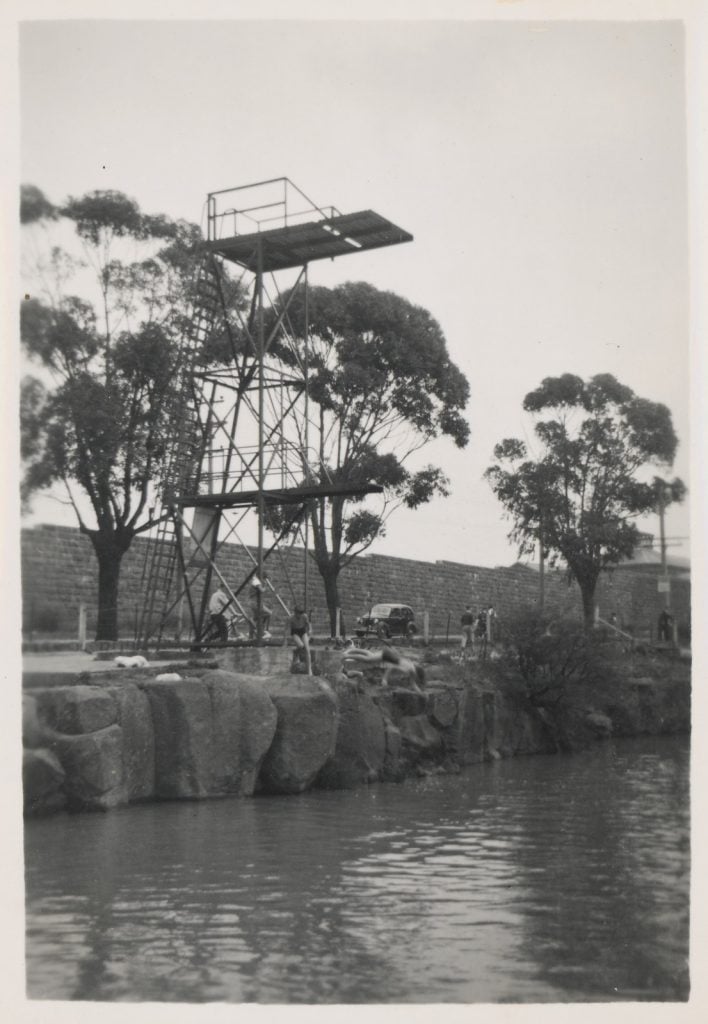
This aerial view shows Pentridge Prison, in relation to Coburg Lake in the 1950’s. Today, the farmland is housing, and the prison site is opened to the community with shops, cinema and open spaces – the buildings reminding us of previous lives of ordeal and misery lived behind the bluestone walls.
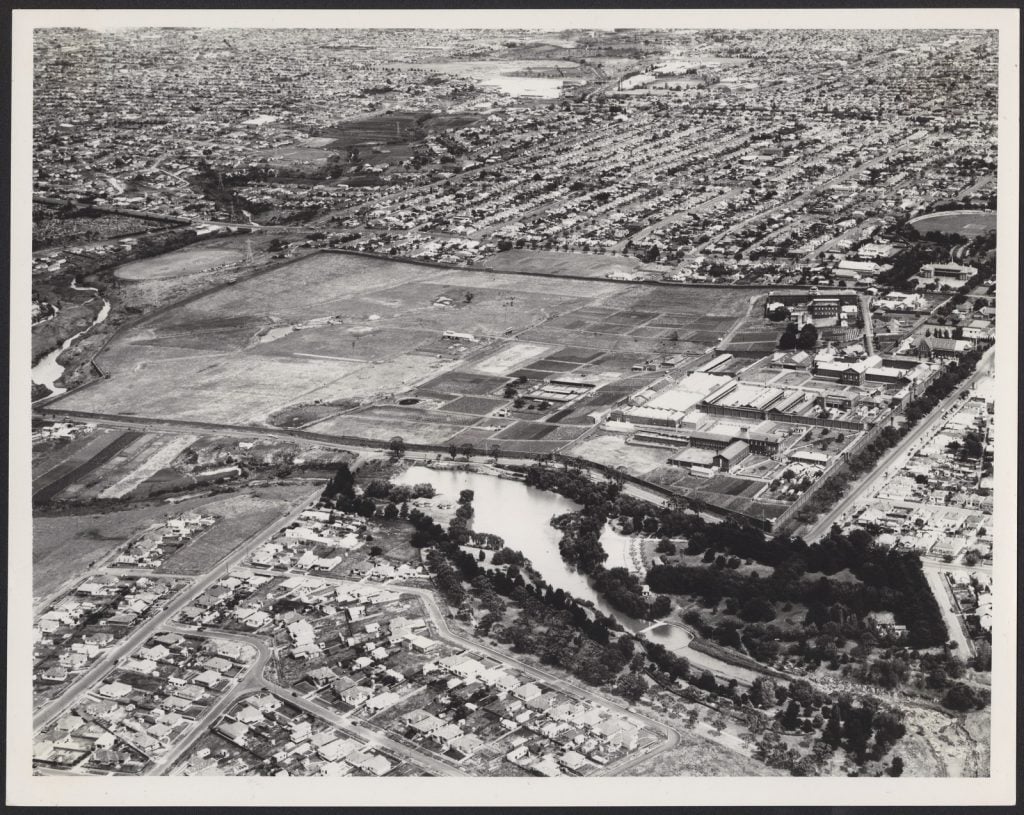
[between 1950 and 1960]. This item is in copyright. H2016.33/82
Further reading
- H.M. Prison Pentridge – Victorian Heritage Database
- Allom, Lovall and Associates, 1996, Pentridge : conservation management plan, Melbourne : Allom Lovell & Associates
- Richard Broome, 2001, Coburg: between two creeks, Pascoe Vale South, Vic. : Coburg Historical Society
- Peter Lynn and George Armstrong, 1996, From Pentridge to Pentonville: a history of prisons in Victoria, Melbourne, State Library of Victoria
- The history, heritage and restoration of Pentridge
- Forgotten market gardens of the Coburg Municipal Baths – article from Wikinorthia, on the market gardens behind Pentridge


Hi Jane, great article about Pentridge and surrounds. Pentridge was a major landmark during childhood as I grew up very near the prison.
In the Charles Pratt aerial photo, located at 9 o’clock, you can see the Chinese market garden my father owned and worked. If you or your readers are interested, I recently wrote an article for WikiNorthia called “The Forgotten Market gardens of the Coburg Municipal Baths” https://wikinorthia.net.au/forgotten-market-gardens-of-the-coburg-municipal-baths/
Thank you for keeping this history alive.
Terry
Thank you Terry!
Glad you enjoyed the article – it is a fascinating history, and would have been a an even stronger presence when operating as a prison. Thanks for the alert too about your Wikinorthia article – that is a fabulous resource. I’ll add it into the further reading section above.
Thanks again for you interest.
While visiting Benalla, in north-eastern Victoria, I was told that a large stone house near the lake was built with rock from the former Pentridge Prison.
Hello Barbara – thank you for that information – the bluestone from the north and west of Melbourne – on the fringes of Victoria’s volcanic plain traveled far.
I went to high school next to Pentridge Gaol in the 1960’s. Newlands State High School.
We used to hit tennis balls against side wall which bordered the school. Occasionally we managed to lob one over top of wall & they sometimes came back. We always wondered from who? We were also very interested by the Ryan / Walker escape as if it had happened on a week day we would have got the day off.